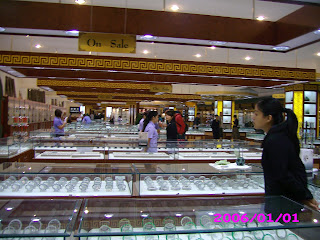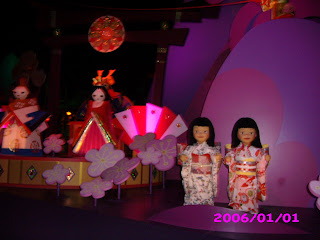BREAST CANCER / DENSE BREASTS
It
had been an annual routine. Papa used to take the whole family to Kunthirical,
Thalavady to spend some time with his parents. One day I heard Papa admonishing
Mummy for visiting an ailing lady in the neighbourhood who had been on her
final days tormented by terminal cancer.. That was the first time in my life, I
learned there existed an illness known as cancer. Papa in his ignorance had
thought that cancer was infectious.
But
cancer caught us unawares. In the year 1977, Mummy had a severe headache. She
had till then been toiling in the kitchen happily for the entire family. The
headache morphed into paralysis. We were all poorly oriented. We took her to Ayurveda
and Allopathy doctors. They were of the opinion it was nothing but paralysis
that required time for cure. But when a close relative castigated us for not
taking Mummy to Super Speciality Doctors, we took her at once to the Kottayam
Medical College Hospital.
She
was examined there by a Neuro Physician who put three questions to us.
Didn’t you take her to doctors
earlier?
We replied, ‘Yes’.
Didn’t they have a look at her eyes
with a pen torch?
We said, ‘Yes’.
What did they see there?
We answered, ‘We have no idea ’.
The
Professor was emphatic. He said the patient was afflicted with Brain Tumour and CMC Vellore was the
only place that could take care of her.
At
CMC Vellore, it was diagonised that she had Glioblastoma, a highly aggressive
and malignant form of Glioma.
There
was Surgery followed by Chemotherapy, Radiation, Physiotherapy and a host of
medicines. The treatment enabled her to get up and gradually move around.
However following a relapse, she breathed her last nine months after the
splitting headache had surfaced.
More
was in the pipeline. This time it was breast cancer that caught my sister in law at the beginning of the century. The
malignancy was Stage 2. But Mastectomy
coupled with Chemotherapy, Radiation and medicines along with close monitoring
cured her of the ailment. She lived on for two decades. However a cardiac
indisposition took her away.
Whenever
we hear of brain tumour and breast cancer we are on an alert.
Recently,
we came across an article in the Times of India of 20th June 2025 by Lata Mishra.
“The hidden breast
cancer risk all Indian women should know about.”
I
am not from the medical field. My awareness on that domain is not even
skeletal.
I
present what I have learned from the article.
Unlike in US, women in India are not
told if they have dense breasts. This could mean a missed cancer diagnosis. In
dense breasts additional screening is crucial as mammograms may miss early
tumours. Dense breasts are biologically more active and harder to image. Dense
breasts are breasts that have a higher
proportion of fibrous and glandular tissue compared to fatty tissue. Fibrous
tissue in the breast is a normal component of breast tissue and a natural part
of breast structure providing support and structure. Glandular tissue in the
breast is responsible for milk production and is a key component of breast
tissue. Fatty tissue in the breast is a normal and natural component of breast
structure, composed of fat cells.
Dense breasts are more common than we
think.
Dense breasts make self examination difficult.
Regular mammograms can be the
difference between Stage I and Stage IV.
Nearly half of women aged 40 and above
are found to have dense breast tissue in mammograms.
Breast density is directly linked to
an increased cancer risk.
US FDA has mandated mammogram reports
to include breast density details since last year (2024).
Breast density cannot be identified
through appearance or physical examination.
Women with extremely dense breasts
have a 1.5 to 2 times risk of breast cancer than those with fatty breasts – a
composition where the majority of the tissue is fat, with relatively little
fibrous or glandular tissue. (Breast tisuue is made up of three main
components: fatty tissue, fibrous tissue and glandular tissue. Fibrous and
glandular tissues are collectively referred to as fibroglandular tissues).
Fatty breasts are associated with a lower risk of breast cancer compared to
breasts with higher density as it’s easier to detect abnormalities on a
mammogram.
Looking for a tumour in dense breasts
is like spotting a snowball in a snowstorm.
Breast cancer begins when a single
cell in the breast undergoes mutation.
Women with dense breasts face a higher
risk because of increased cell population.
Oestrogen plays a key role in making
breasts dense.
Women with a first degree relative
with breast cancer or dense breasts are more likely to have dense tissue.
Breasts have glandular cells that
produce milk and hormonal stimulation till a certain age. These cells can
multiply.
Contrast Enhanced Digital Mammography
(CEDM) can reveal hidden tumour. It is a cost effective alternative to MRI. But
it is not available in India.
If India imposes rules on breast
density disclosure for every mammography it would improve transparency in
diagnosis.
Dense breasts as seen on a mammorgram
refer to breast tissue that has a higher proportion of glandular and fibrous connective tissue
compared to fatty tissue. It’s a normal variation in breast composition and not
an abnormal condition or disease.
Breast size doesnot determine breast density.
Younger women tend to have dense breasts, but not always.
Diet and exercise do not directly
change breast density.
Dense breasts do not cause any
noticeable symptoms like pain or changes in breast appearance.
While dense breasts are not cancerous,
they may slightly increase the risk of developing breast cancer.
Dense breasts have more glandular and
fibrous tissue, which appear white on a mammogram, and less fatty tissue which
appear darker.
On a mammogram, dense tissue can make
it harder to detect tumours because both dense tissue and tumours can appear
white.
Women with dense breasts may benefit
from supplemental screening options like ultrasound or MRI in addition to
mammograms for improving early
detection.
Over 50% of Indian breast cancer cases
come to light at Stage III or Stage IV due to late detection.
22% of Indian women aged 40 – 49 have
dense breasts.
All breasts have milk producing glands
and fibrous tissues, while non dense breasts mostly have fatty tisuues.
Dense breasts are not related to
breast size or firmness.
You can’t tell if you have dense
breasts based on how your breasts look or on their firmness.









































